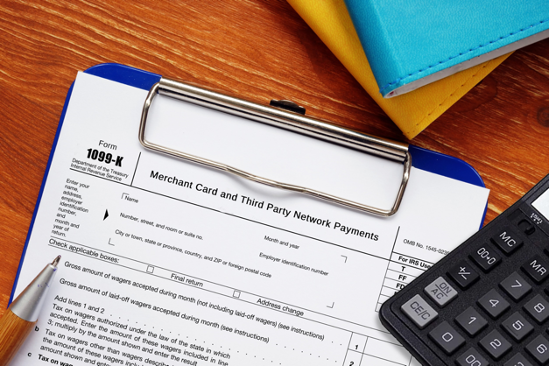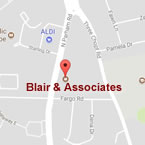
ANOTHER 1099-K REPORTING DELAY BY THE IRS
Relief for Third-Party Settlement Organizations & Self-Employed
December 2023

Form 1099-K…History, Revision, Delays
Third-party settlement organizations (TPSOs) include payment networks such as Venmo, PayPal, Amazon, Etsy, E-Bay and Cash App that process payments for sales made by taxpayers through online marketplaces. TPSOs have been required to report transactions on Form 1099-K to the IRS or the payee for transactions that totaled over $20,000 and more than 200 transactions.
The IRS urged Congress to reduce the threshold to match the $600 limitation as required for 1099-Misc & 1099-NEC reporting. Congress responded with a provision in the American Rescue Plan (ARP) and enacted a revised threshold amount of $600 to replace the $20,000/200 transaction limits. The revision was to be effective in the 2022 tax year.
Had it been implemented in 2022, the upshot would have been the distribution of an estimated 44 million Forms 1099-K to many taxpayers who wouldn’t expect a tax bill.
Negative feedback from taxpayers, tax professionals and TPSOs caused the IRS to treat 2022 as a “transition year”. The intent of the delay was to reduce the potential confusion on the part of taxpayers and the added reporting burden by TPSOs. In November of this year, the IRS released Notice 2023-74 announcing an additional delay of the new $600 Form 1099-K reporting threshold by TPSOs for calendar year 2023.
The IRS decision to delay the reporting requirements one more year is intended to plan for a threshold of $5,000 for tax year 2024 and an orderly implementation phase-in of the Congressional mandate of $600.
“We spent many months gathering feedback from third-party groups and others, and it became increasingly clear we need additional time to effectively implement the new reporting requirements,” said IRS Commissioner Danny Werfel. “Taking this phased-in approach is the right thing to do for the purposes of tax administration, and it prevents unnecessary confusion … for taxpayers, tax professionals and others in this area. It's important that taxpayers understand what to do as a result of this reporting, and that tax professionals and software providers have the information they need to assist taxpayers.”
Immediate Effect of the Delay for Taxpayers
- Tax year 2023 will be treated as a transition period as was 2022. Enforcement of any new thresholds is pushed forward to the 2024 tax year.
- TPOSs won't be required to report 2023 transactions on a Form 1099-K to the IRS or online sellers for the $600 threshold amount. The $20,000/200 transaction limits will remain in effect for 2023.
- IRS says it is planning for a threshold of $5,000 for the tax year 2024 to phase in implementation of the $600 reporting threshold as enacted under the American Rescue Plan (ARP) by Congress.
- The delay of the 1099-K reporting requirement doesn’t change the fact that the IRS has always required taxpayers to report all taxable income, whether they receive a 1099-K form or not.
As further clarification, the Agency notes that reporting requirements do not apply to personal transactions such as birthday or holiday gifts, sharing the cost of a car ride or meal, or paying a family member or another for a household bill. These payments are not taxable and should not be reported on Form 1099-K.
That said, the casual sale of goods and services, including selling used personal items like clothing, furniture and other household items for a loss, could generate a Form 1099-K for many people, even if the seller has no tax liability from those sales.
Note: The planned $5,000 threshold appears to represent a reasonable transitional compromise in 2024. The IRS actively invites feedback from taxpayers, tax professionals and TPSOs to ensure the smoothest path to compliance with the new law. Meanwhile, the $5,000 threshold will ease the TPOS and individual taxpayer burdens on minimal transaction amounts while capturing larger tax revenue streams during the interim.
For more information, visit these sites.:
The above presentation is meant as an overview only.
Give us a call and we’ll quickly help you with questions.
- WHAT DOES IRMAA HAVE TO DO WITH YOUR MEDICARE PREMIUMS IN 2024?
- SOCIAL SECURITY RECIPIENTS GET A “RAISE”
- MORE GOOD NEWS… RETIREMENT PLANNING 2024
- WHAT DOES PORTABILITY HAVE TO DO WITH YOUR ESTATE PLAN?
- IRS HALTS PROCESSING ERC CLAIMS
- VIRGINIA TAXPAYERS TO ENJOY MORE THAN $1 BILLION IN TAX RELIEF
- AMERICAN TAXPAYERS WHO OWN THEIR HOME
- WAGE INFLATION & BRACKET CREEP
- BUSINESS OWNERS & MANAGERS: EMPLOYEE RETENTION CREDIT
- Comprehensive Taxpayer Attitude Survey (CTAS) 2021
